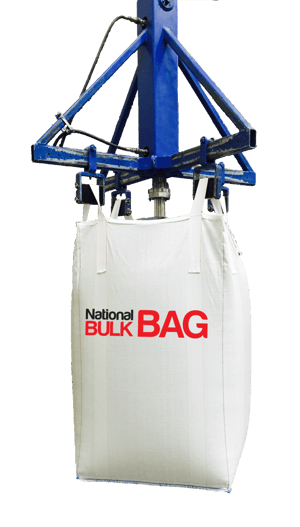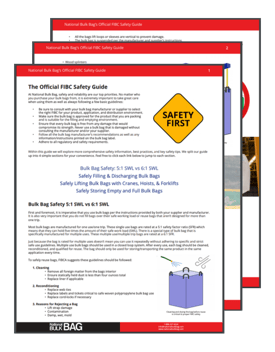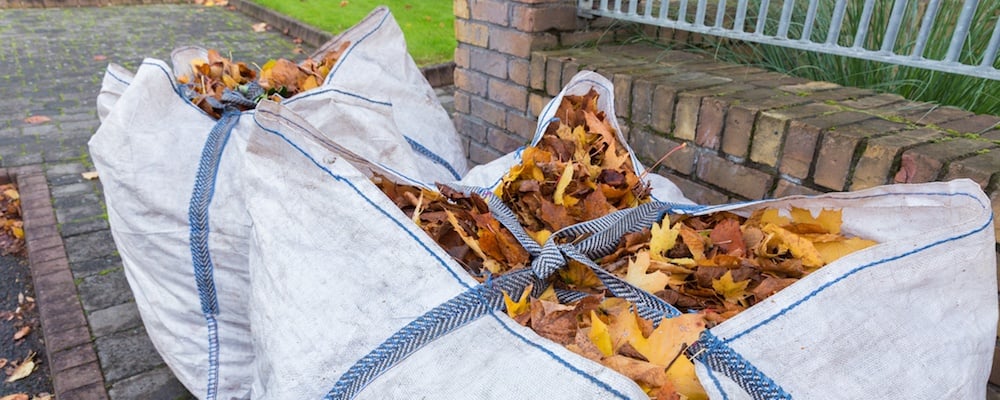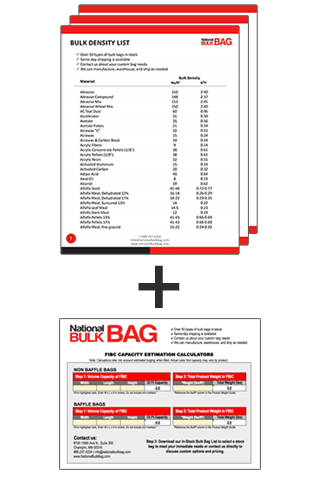Updated 4-19-2022
It is important to follow safe use guidelines when transporting and storing products with flexible intermediate bulk containers (FIBCs). These include guidelines from manufacturers, suppliers, and the Flexible Intermediate Bulk Container Association (FIBCA).
When safe use guidelines are not followed, especially when combustible and or flammable materials are being packed, accidents can occur resulting in injuries and even death. When filling or discharging a bulk bag of any kind, be sure to follow these guidelines.
For regular updates, subscribe to our blog by filling out the “Subscribe to our blog updates” form to the right.
Filling & Discharging FIBCs
When filling and discharging bags it is imperative that at all times all personnel take the necessary safety precautions and are aware of their surroundings. All personnel should wear the proper safety gear when handling the bags. (Note: These guidelines are a summary of FIBCA's Bulk Bag Safe Handling Guidelines for filling and discharging bulk bags) To safely and successfully fill and/or discharge a bag, it is important you follow these best practices and make sure:
 Your bag is free from damage that can compromise its strength.
Your bag is free from damage that can compromise its strength.- When filling, the bottom discharge option is properly closed and secure.
- The bag that you are using is compatible with the product you are packing (i.e. dangerous goods and hazardous materials).
- The bag is appropriate for the filling/discharging environment (electrostatic concerns are addressed in flammable or explosive environments).
- The bag is filled evenly.
- The filled bag remains stable at all times.
- The capacity of any device used to suspend and or support a filled bag is rated sufficiently.
- All of the bags lift loops or sleeves are vertical to prevent damage.
- The bag is suspended per the manufacturer/supplier’s instructions.
- The crane hooks/bars or forklift tines being used to lift the bag are free of sharp edges.
- The bag’s fill spout is closed properly when the filling is complete.
- The bag is raised and lowered smoothly.
- To take proper measures to control dust around the bag to prevent dust ignition.
- All personnel are safe and stay clear of any potential hazards.
- You comply with all of the suppliers handling recommendations/instructions.
Remember to never:
- Fill a bag with a product that is incompatible.
- Exceed the safe working load of the bag.
- Fill a bag unless it is appropriate for the filling environment.
- Fill a bag to a level that compromises its stability or exceeds the height or width limitations.
- Use a device to support the bag that is not specifically designed to do so.
- Allow personnel to place any appendage under a suspended bag.
- Suspend a bag that does not have an approved safety latch.
- Handle a bag that is damaged without consulting your supplier/manufacturer.
- Lift and suspend a bag using fewer lift loops/sleeves than have been provided.
- Deviate from applicable safety requirements.
To insure a safe working environment, it is important that you adhere to all guidelines and best practices outlined above. For a comprehensive guide on safe bulk bag handling guidelines that include:
- Storage of empty bags
- Filling of bags
- Handling with cranes or hoists
- Handling bags with fork-lift trucks
- Storage and transportation of filled bags
- Emptying/Discharging bags
Click here to download FIBCA’s FIBC Safe Handling Guidelines. Also, please do not hesitate to reach out to our experts with any questions that you may have. We are happy to answer any safety-related questions.
Thanks for reading!
 At National Bulk Bag, safety and reliability are our top priorities. No matter who you purchase your bulk bags from, it's extremely important to take great care when using them. We explore comprehensive safety information, best practices, and key safety tips within this guide.
At National Bulk Bag, safety and reliability are our top priorities. No matter who you purchase your bulk bags from, it's extremely important to take great care when using them. We explore comprehensive safety information, best practices, and key safety tips within this guide.
Our safety guide is split up into four sections for your convenience:
- Bulk bag safety: 5:1 SWL vs. 6:1 SWL
- Safely filling & discharging FIBCs
- Safely lifting FIBCs with cranes, hoists, & forklifts
- Safely storing empty and full FIBCs
Download our Official FIBC Bulk Bag Safety Guide by clicking the button below!






